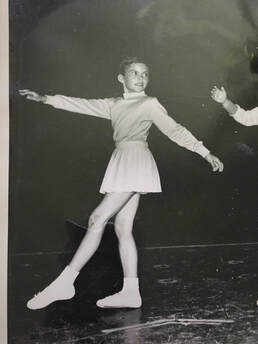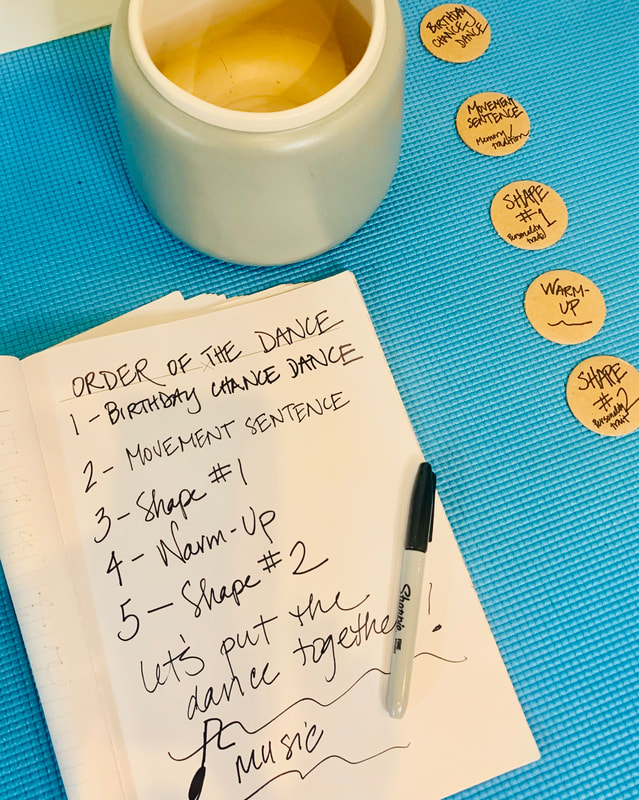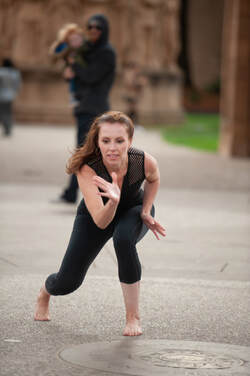#2: Movement History DanceWe all have a movement history, because we’ve all been moving all our lives: Crawling, walking, running, dancing, hopping, skipping, throwing, swinging, rolling, nodding, waving, turning.
Let’s share our unique movement experiences and use them to make a dance. Let’s celebrate the people and practices that have helped define us as movers. Consider how your past movement experiences have defined you as a mover. In your house: Lesson 1:
Lesson 2:
HOW TO MAKE YOUR MOVEMENT HISTORY DANCE: Sequence is determined by how you ordered the photos in your collage. 1. Shape #1 from photo #1, 2. Movement sequence from photo #1. 3. Transition: travel step. This is how you move from photo #1 to #2. 4. Shape #2 from photo #2. 5. Movement sequence from photo #2. 6. Transition: travel to photo #3. 7. Shape #3 from photo #3. 8. Movement sequence from photo #3. DETAILS FOR THE DANCE VIDEO:
Suggested educational resources: Smuin Ballet Company members Weston Krukow and Ben Needham-Wood explore the similarities between the competitive and artistic disciplines in a CSN Bay Area documentary dance short titled Baseballet. This is an excerpt titled, Run Around. https://www.youtube.com/watch?v=rgc3biE3LjA Abby Zbikowski: exploring the layered meanings of play. https://vimeo.com/217437456 Interview with Abby Zbikowski by Jill Randall: Life of a Modern Dancer https://blog.lifeasamoderndancer.com/2015/09/artist-profile-109-abby-zbikowski-champaign-illinois.html
0 Comments
#1: Birthday Chance DanceDance Is Home is back and focusing on lessons for getting to know new and returning students while we continue to embrace our unique dance spaces. Personal stories will drive each lesson and inspire future topics, playlists, and culturally relevant teaching.
Distance learning has inspired me to organize each unit with activities that stand on their own but can be combined into a multi-layered piece. The first unit will focus on birthdays. We all have one. The dates, astrology signs, stories, and traditions create a fun platform for dance making and conversation. I’m looking forward to sharing this new series. Let’s celebrate our special day with some dance making during #distancelearning Project #1: Birthday Chance Dance Still at home, birthday celebrations continue. In your house: Lesson 1:
Month_ _/ Day_ _ 0- Jump 1- Run 2- Spin 3- Punch 4- Melt 5- Rise 6- Skip 7- Explode 8- Balance 9- Kick Example: 11/08= Run, run, jump, balance. *if your number repeats, create two variations of the movement. Lesson 2:
Lesson 3:
Lesson 4:
Lesson 5: Put it all together!
DETAILS: HOW TO MAKE YOUR BIRTHDAY CHANCE DANCE:
Suggested educational resources: Bringing words to life: (Lesson 2 & 3) https://www.youtube.com/watch?time_continue=1&v=gb67f2HLVGM&feature=emb_logo Bill T Jones discusses Story/Time. The creative process and putting stories together in a random order. (Lesson 1 & 5) https://vimeo.com/34480831 Merce Cunningham and Chance Procedure (Lesson 1 & 5) https://www.youtube.com/watch?time_continue=11&v=zhK3Ep4HiI0&feature=emb_logo *Academic schedules vary, determine the lesson order to fit your particular needs, environment, and level of the dancer. |



